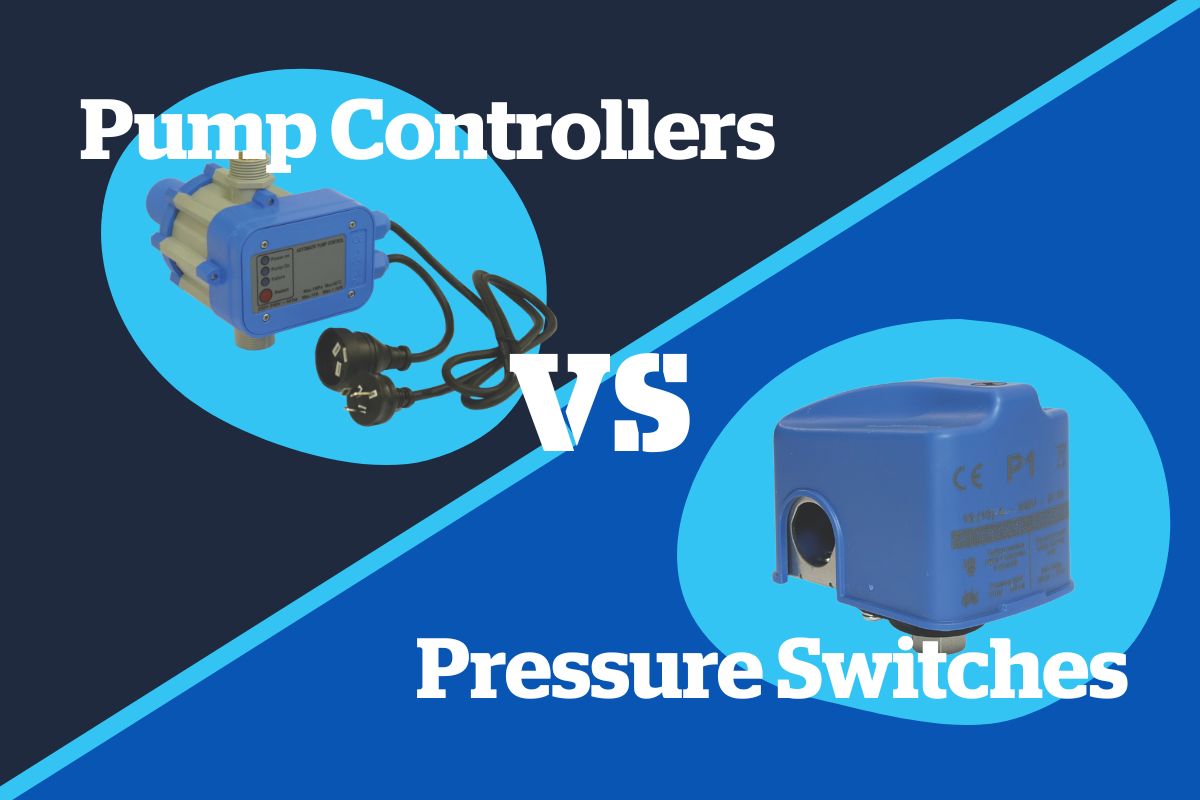Pump Controller vs. Pressure Switch: Key Differences and When to Use Them


Choosing between a pump controller and a pressure switch can make all the difference in water system performance, especially for your customers. As a pump reseller, understanding when to recommend each solution helps you add value, build trust, and ensure repeat business.
Here’s a clear breakdown of both, so you can confidently guide buyers toward the right fit.
A pressure switch is a mechanical device that turns a pump on or off based on system pressure. It starts the pump when pressure drops and stops it when pressure is restored. Commonly used in tank-fed or bore systems, it’s a simple and affordable solution that works best with a pressure tank to reduce cycling. While reliable and low-cost, pressure switches don’t include features like dry-run protection, making them better suited for basic setups rather than more complex or high-risk applications.
Best for:
Simple systems (e.g. tank-fed household setups)
Single-storey homes or sheds
Constant water demand with minimal variation
Customers looking for low-cost, no-frills control
Pros:
Affordable
Easy to install
Works well with pressure tanks
Long service life with minimal maintenance
Limitations:
No dry-run protection
Doesn’t manage flow or offer digital feedback
Less suited for variable or multi-outlet setups
A pump controller is an electronic device that automatically starts and stops the pump based on water demand, maintaining constant pressure without needing a pressure tank. It’s ideal for homes, irrigation, or any system with multiple outlets. Most controllers include dry-run protection, automatic restart, and system status indicators. While they cost more than pressure switches, they offer greater convenience and built-in safety — though surge protection is recommended in areas with unstable power.
Best for:
Domestic homes with variable water use
Irrigation systems
Commercial washdown or pressure boosting
Applications with a risk of running dry
Pros:
Maintains consistent pressure (even across multiple outlets)
Built-in safety features (like dry-run protection)
Easier troubleshooting with LED/error indicators
Compact and all-in-one
Limitations:
Higher upfront cost than a pressure switch
Electronics can be affected by power surges
May not be ideal for all pump types (always check compatibility)
| Feature | Pressure Switch | Pump Controller |
|---|---|---|
| Control Type | Mechanical | Electronic |
| Pressure Consistency | Moderate (requires pressure tank) | High |
| Dry-Run Protection | ❌ Not included | ✅ Usually included |
| Cost | Lower | Higher |
| Ideal Use | Simple, small systems | Multi-outlet or critical applications |
| Installation | Easy | Easy |
Choosing between a pressure switch and a pump controller depends on the system’s complexity and the customer’s needs. For simple setups like a single tap or trough, a pressure switch is an affordable, reliable option, especially with a pressure tank.
But for systems with multiple outlets, varying flow, or a risk of dry running, a pump controller is the better choice. It offers consistent pressure, built-in protection, and greater convenience with less manual intervention.
Go with a pressure switch if your customer:
Is setting up a basic tank-fed or bore-fed system
Doesn’t require advanced safety features
Wants a budget-friendly option
Is comfortable installing with a pressure tank
Recommend a pump controller if your customer:
Needs constant pressure without a tank
Wants plug-and-play functionality
Is concerned about pump longevity or dry running
Has multiple outlets or uses water intermittently
There’s no one-size-fits-all answer, but understanding how and where each option performs best helps you make informed recommendations. For wholesale orders, we stock a full range of both pressure switches and pump controllers from trusted brands, including options with built-in protection and industry-standard fittings.
Want help choosing the right control solution for your next customer order? Get in touch with our technical team or shop our wholesale range online.

Call us on (02) 4271 2220
email us here or complete the order form below